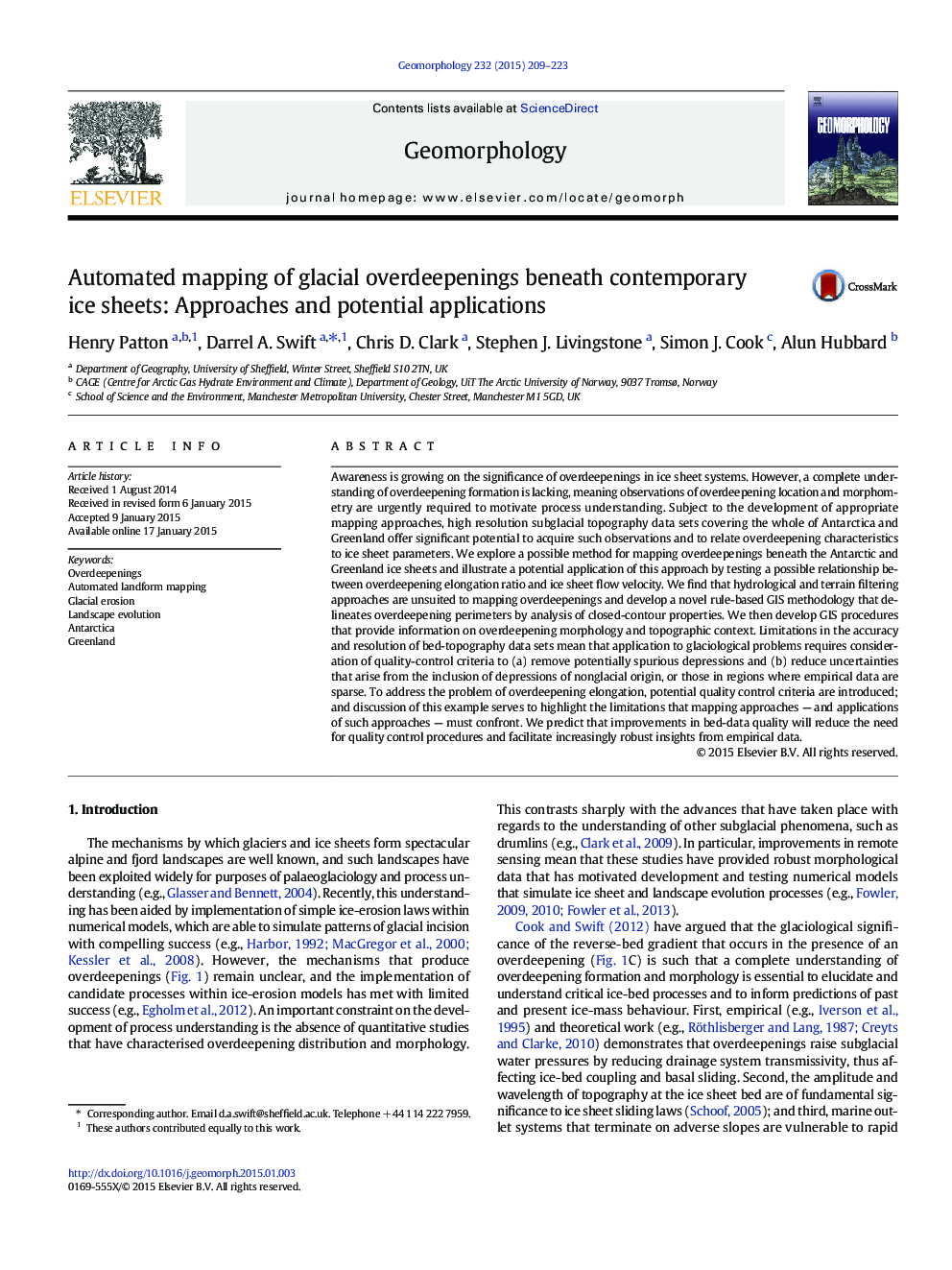| کد مقاله | کد نشریه | سال انتشار | مقاله انگلیسی | نسخه تمام متن |
|---|---|---|---|---|
| 4684367 | 1635417 | 2015 | 15 صفحه PDF | دانلود رایگان |
• Overdeepenings are fundamental components of ice sheet beds.
• We present methods for mapping overdeepenings and characterisation of their form.
• Method offers potential to reveal relationships with present ice sheet parameters.
• A possible link between overdeepening elongation ratio and ice velocity is tested.
• Limitations of bed-topography datasets require strict quality control criteria.
Awareness is growing on the significance of overdeepenings in ice sheet systems. However, a complete understanding of overdeepening formation is lacking, meaning observations of overdeepening location and morphometry are urgently required to motivate process understanding. Subject to the development of appropriate mapping approaches, high resolution subglacial topography data sets covering the whole of Antarctica and Greenland offer significant potential to acquire such observations and to relate overdeepening characteristics to ice sheet parameters. We explore a possible method for mapping overdeepenings beneath the Antarctic and Greenland ice sheets and illustrate a potential application of this approach by testing a possible relationship between overdeepening elongation ratio and ice sheet flow velocity. We find that hydrological and terrain filtering approaches are unsuited to mapping overdeepenings and develop a novel rule-based GIS methodology that delineates overdeepening perimeters by analysis of closed-contour properties. We then develop GIS procedures that provide information on overdeepening morphology and topographic context. Limitations in the accuracy and resolution of bed-topography data sets mean that application to glaciological problems requires consideration of quality-control criteria to (a) remove potentially spurious depressions and (b) reduce uncertainties that arise from the inclusion of depressions of nonglacial origin, or those in regions where empirical data are sparse. To address the problem of overdeepening elongation, potential quality control criteria are introduced; and discussion of this example serves to highlight the limitations that mapping approaches — and applications of such approaches — must confront. We predict that improvements in bed-data quality will reduce the need for quality control procedures and facilitate increasingly robust insights from empirical data.
Journal: Geomorphology - Volume 232, 1 March 2015, Pages 209–223
